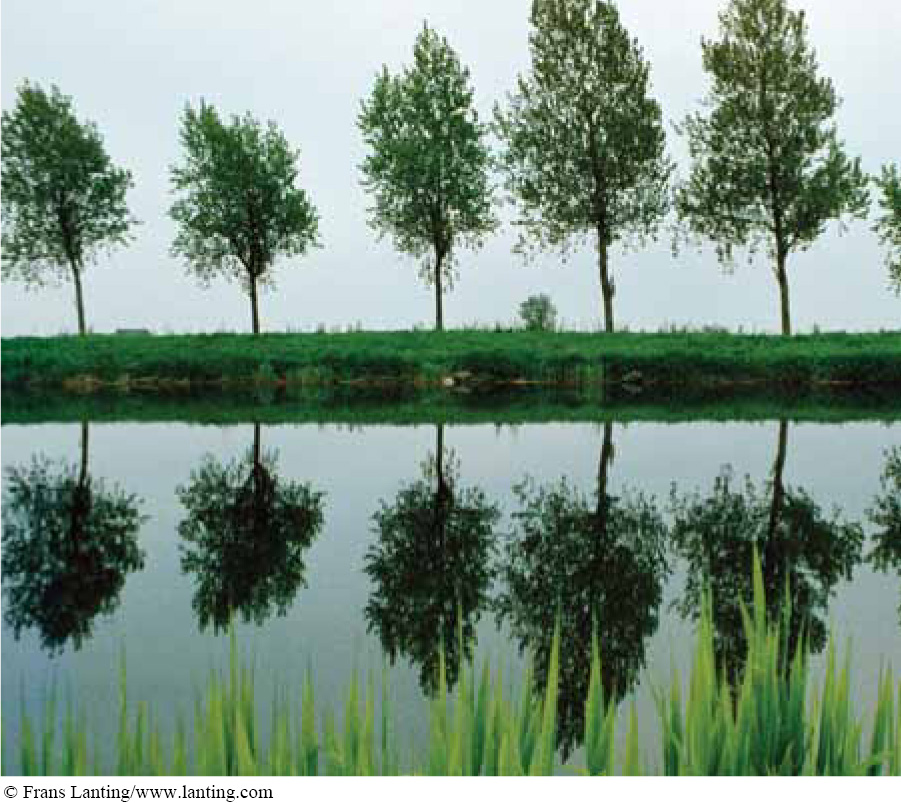
With the seed, plants have created an impressive little time capsule. In suspended animation, the embryo patiently waits until the conditions for its new life are just right and then bursts forth with growth. Let’s examine what makes up a seed and how it emerges from its dormancy and begins life.
The seeds of plants used in agriculture have thinner coats and more stored energy than the seeds of wild, naturally occurring plants. Why is this so?
The seed does not start to grow until the water, temperature, and oxygen conditions are good for germination and growth (FIGURE 18-25). Sometimes this means waiting a matter of days or weeks before germination. For some species, though, the seeds remain dormant even in the face of ideal environmental conditions. Their seeds require something more before they will germinate. They may require passage through the gut of a bird or mammal to roughen up and weaken the seed coat. Or they may require exposure to fire. Such seeds can remain dormant for dozens or even hundreds of years before finally germinating. Conversely, over the course of many generations of plant domestication, plant breeders are likely to have selected the seeds that germinate most quickly and have the fastest initial growth. These features may be optimal under agricultural conditions, where fields are cleared, pests are removed, and competition is limited.

There can be benefits to producing seeds with coats that require extra “processing” before they can germinate. (1) The need for extra processing can prevent the germination of seeds that have not been dispersed widely enough. (2) The need to pass through an animal gut can ensure that seeds are always left in a dollop of natural fertilizer. Or (3) exposure to fire may ensure that the seed germinates in clearings where competing trees have been burned down and light is available.
749
“Though I do not believe that a plant will spring up where no seed has been, I have great faith in a seed. Convince me that you have a seed there, and I am prepared to expect wonders.”
—HENRY DAVID THOREAU, Faith in a Seed
Such requirements, though, can also precariously link the evolutionary success of the plant to the behavior of another species or to specific ecological conditions. For example, some of the plants producing seeds that require the extreme heat or smoke from a fire to induce germination are in trouble. As humans have reduced the incidence of wildfires, so, too, have we reduced the ability of many plants to germinate.
Animals (including humans) love to eat seeds. Why?
The whole purpose of a seed is to package an embryo with a ready-
On a somewhat minor note, a confusing issue—
But let’s return to the seed, ready to begin its growth. With the proper processing and sufficient warmth, oxygen, and water, germination can finally begin. As germination begins, water is absorbed, causing the embryo to enlarge and the seed coat to burst. Utilizing the fat and starch reserves of the endosperm and embryo, metabolic activity increases dramatically and the plant begins growing (FIGURE 18-26). It first sends down a root and then sends up the shoot. In many plants, the cotyledons can photosynthesize after their energy reserves are used, providing even more energy for the plant. This early seedling growth begins in the apical meristems, which we explore in Section 18-

TAKE-HOME MESSAGE 18.13
A seed, containing an embryo and a supply of nutrients, begins to grow only when the water, temperature, and oxygen conditions for life are just right. Seeds sometimes must pass through an animal’s digestive system or be exposed to fire before they can germinate. Initial growth utilizes fat and starch reserves stored in the endosperm and embryo.
Some seeds require specific types of processing, such as transmission through an animal's digestive system, before they can germinate. How might this benefit the plant?
This can prevent germination of seeds that have not been adequately dispersed. It also could ensure that seeds are left with a dollop of natural fertilizer.
750